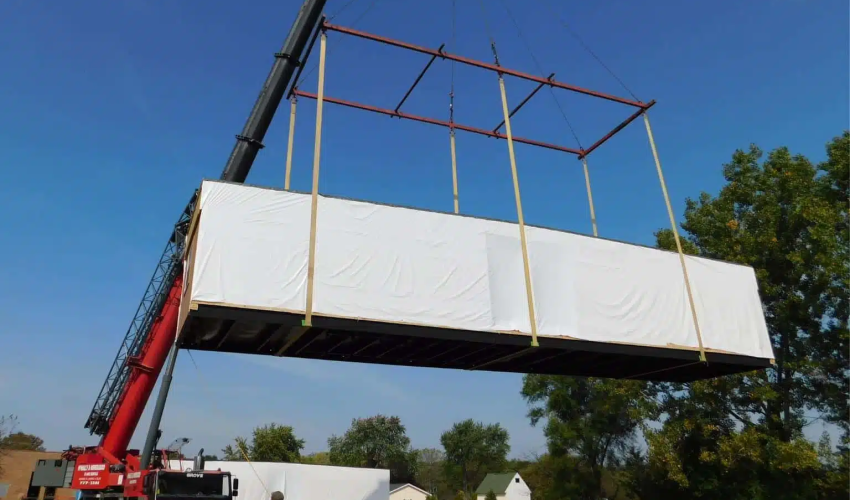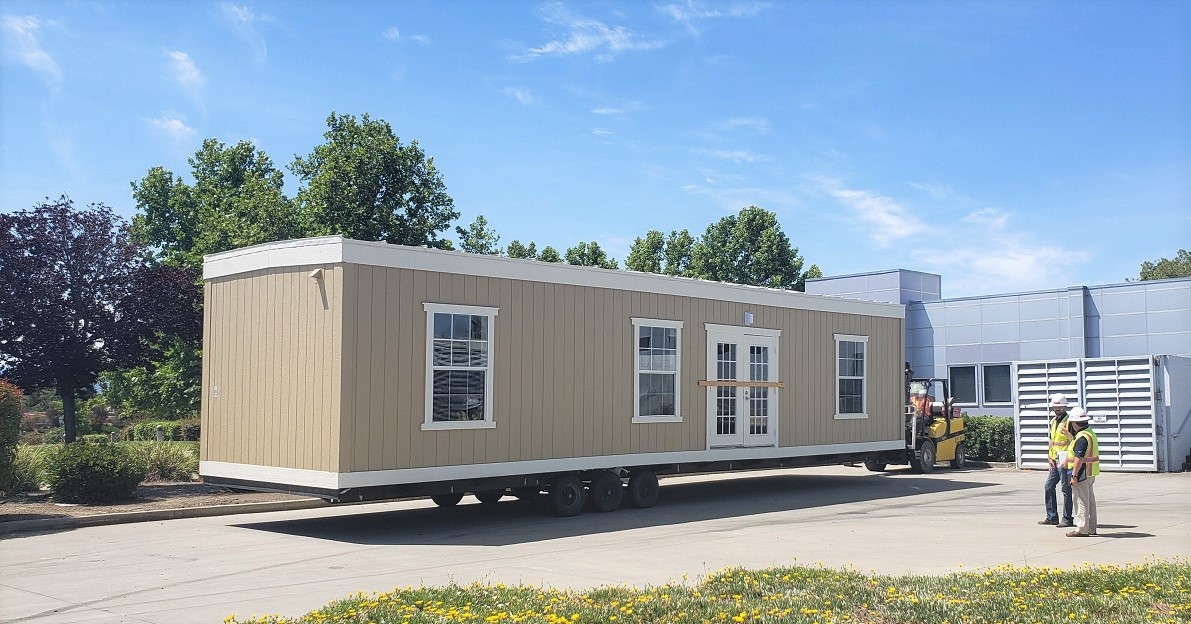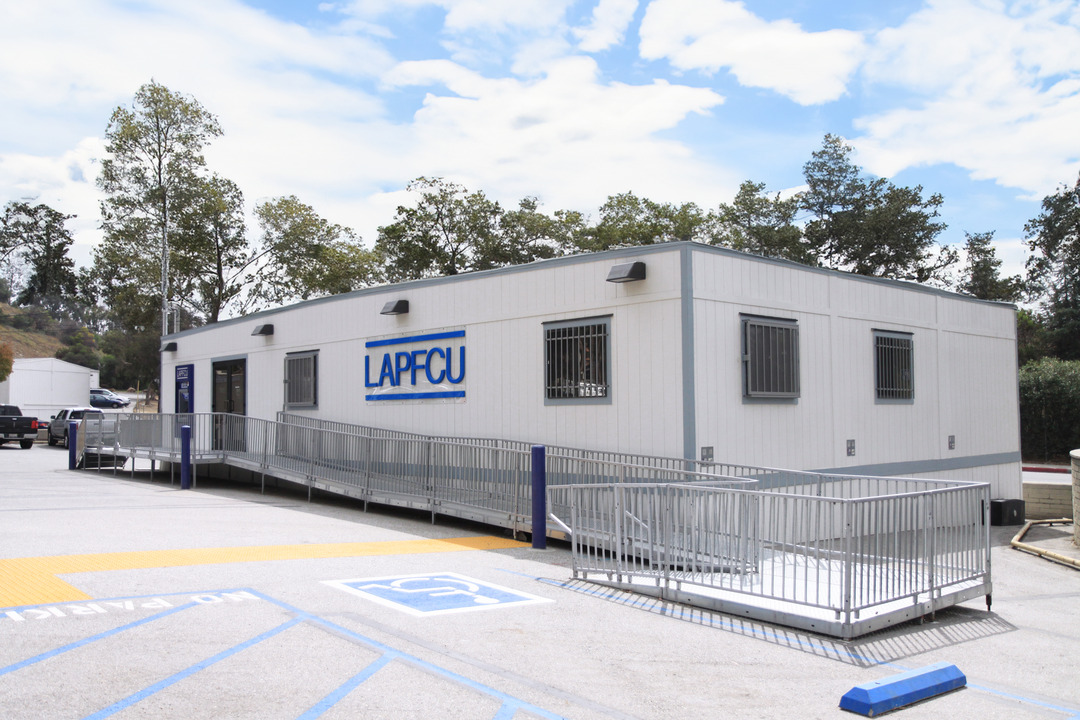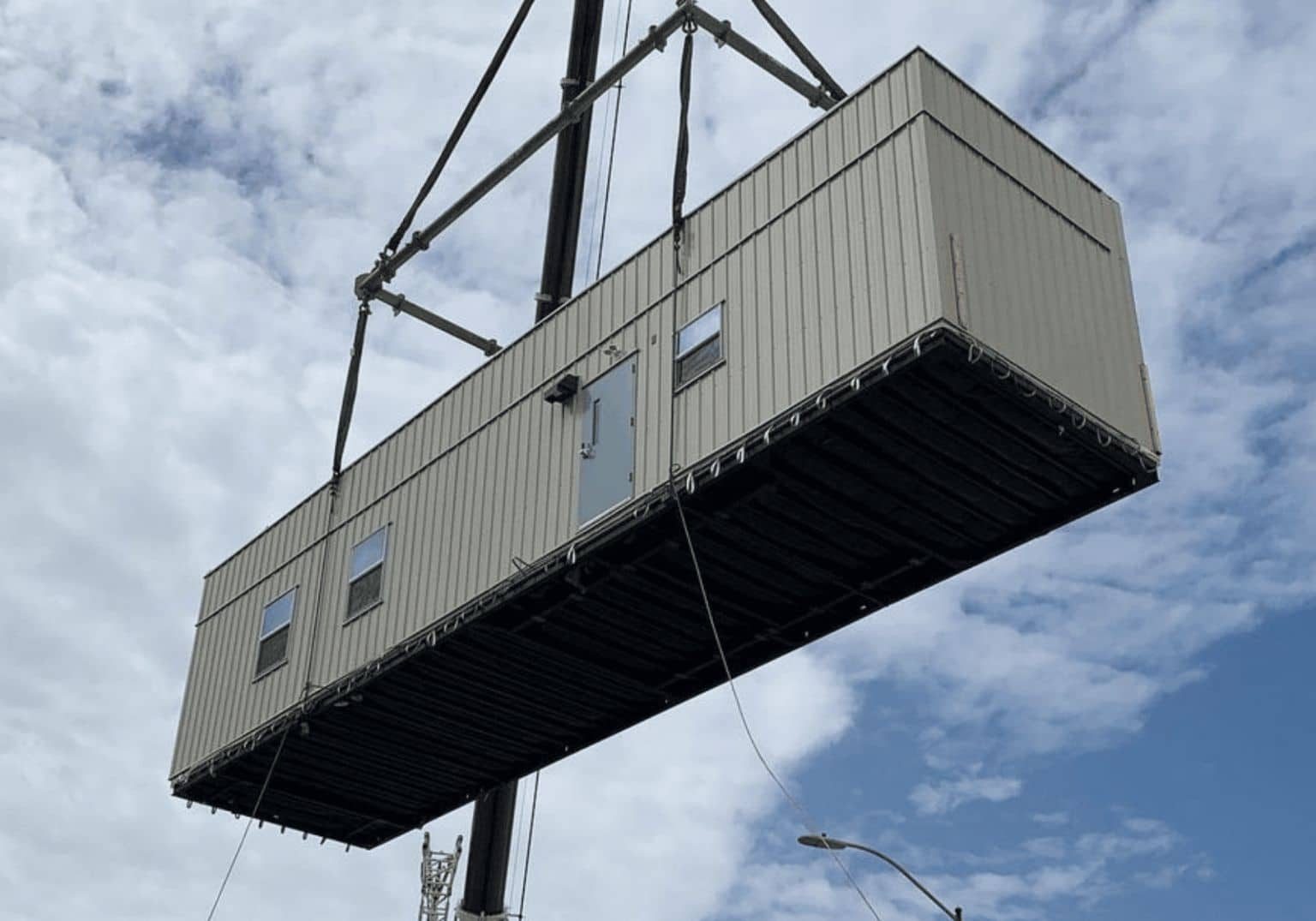Prefab Construction Methods: Mobile Modular vs. On-Site Builds
What Is Prefab Construction?
“Prefab construction” or prefabricated construction refers to the order in which a building is manufactured and assembled. Prefab construction methods involve creating components of a building within a factory, where all tools and materials are available, then assembling them on the designated site to complete the project. This is a construction method that is rising in popularity because it saves materials, time, and money.
Types Of Prefab Construction
Modular Construction
Modular construction is one of the most popular types of prefab construction. At Mobile Modular, we use modular construction, which requires relatively little on-site work. Prefabricated modules are built in our factory and then joined together using trucks, bolts, cranes, and other heavy machinery. Four-sided modules, partially open-sided modules, or fully open-sided modules may be used. Using efficient industrial practices, we can create high-quality buildings in a safe and regulated environment.
Panelized Construction
With panelized construction, the frame of a building is constructed off-site at the factory. These panels of wood or steel are moved to the job site after being constructed in a climate-controlled factory environment. The rest of the building is then constructed around the frame, including walls, floors, and roofing, and the quality inspection occurs on-site.
Timber Framing
A specialized type of prefab construction method is timber framing, in which wood makes up the architectural structure of a building and is typically held in place with wooden pegs. This style of prefab construction is often used on residential properties and results in exposed wooden beams inside the building.
Steel Framing
Steel framing, another type of specialized prefab construction, involves building a metal building frame in the confines of a factory and then building the rest on the project site. Steel is a preferred construction material because it is durable, lightweight, and cut to specific dimensions. These frames are constructed at a rapid speed, accelerating the construction project.
Concrete Systems
Some prefab construction projects use fragments of concrete cast in a factory to reinforce the strength of buildings. Concrete panels are heavier and more difficult to move, but provide an extra level of sturdiness and stability. It can also improve the appearance of a building and save money on prefab construction costs.
Main Differences Between Prefab Construction Methods And Traditional Construction
Prefab Vs. Traditional Construction Cost
Prefab building construction costs less than stick-built construction by a significant margin, saving consumers approximately 25% in comparison to traditional. Both labor and materials cost less for prefab construction, allowing prefab construction companies to pass those savings on to their customers. This is a major draw for companies seeking commercial buildings.
Length Of Construction Time
Modular prefab construction projects can be completed 30–50% more quickly than traditional construction projects. For companies that are working with tight deadlines, this can be a saving grace. Companies frequently use our modular offices as a temporary workspace while their new office is under construction or after access to their old office has been lost. Our used modular buildings can be deployed at a lightning speed because they are waiting in our inventory to be transported to their next location.
Foundation
Traditional buildings have a foundation that is mostly underground, using holes in the ground, concrete, and wooden piers. Modular buildings can be blocked up and anchored on ABS pads or below grade concrete piers for temporary use or set at grade level on a perimeter wall foundation for permanent applications.
Permits And Regulations
National regulations for prefab modular buildings are typically similar to traditional buildings, but states have specific prefabricated building project codes that must be followed. Prefab construction companies must obtain a permit from the state and adhere to all local regulations. The Modular Building Institute worked in collaboration with the International Code Council to create the ICC/MBI Standards 1200 and 1205-2021, which set standards for off-site construction.
Place Of Construction
The most important difference between prefab vs. traditional construction methods is that prefab building construction occurs partially or mostly off-site. Materials, tools, and workers are all available at the factory, reducing transportation costs and weather-related project delays. Prefab construction companies can easily conduct quality inspections from the factory and reuse excess materials, minimizing waste.
Get Started On A Prefab Building Project
Interested in how prefab building construction can benefit you? Reach out to us, and we’ll offer a quote for the project you have in mind. Owning or leasing a commercial modular building comes with a variety of benefits that standard construction methods don’t offer. We can even create a custom project fit for your needs.
Frequently Asked Questions
What Is The Difference Between Prefab And Modular Construction?
The difference between prefab and modular construction is minimal. The term modular construction has become essentially synonymous with prefab construction because it is the most popular kind. However, modular construction is a type of prefab construction. All modular construction projects are prefab projects, but not vice versa.
What Are The Benefits Of Prefab Commercial Construction?
Unlike houses, business offices and other industrial buildings often require more space as the number of employees grows, often within a short period of time. With prefab commercial construction, commercial buildings can be easily added onto because modules are designed to fit together seamlessly.
Prefab construction methods allow businesses to have more flexibility within their budget, giving them the opportunity to explore new business ventures and opportunities. The low cost of prefab commercial buildings has become especially appealing to businesses with the rise of hybrid work environments.
Are Prefab Buildings Created With Sturdy Materials?
Prefab construction companies use the strongest materials available. Regulations hold modular prefab construction projects to a considerably high standard, and modern prefab construction techniques create buildings that are every bit as reliable and durable as traditionally-built construction projects. They can withstand extreme weather conditions and many years of wear.





